As soon as we arrived in our “Purser’s Cabin”, we felt right at home. In fact, this felt more like home than any place since we left Ottawa! Between knowing we wouldn’t have to pack up for over a week, having space to call our own, and being familiar with the ship’s routines after two voyages on nearly identical ships, this really did feel like home.
Oddly, we are both finding we need to remind ourselves that it is OK to brush our teeth using the tap water! After 4 months of using bottled water for teeth brushing and drinking, it has become a habit to avoid tap water. We are constantly reminding ourselves that the tap water onboard is safe. For those that missed our reports of previous journeys, the ship has a fresh water plant and makes it own fresh water, so there is no worry about taking on contaminated water in foreign ports.
To understand our track, here is a little spherical geometry lesson. Two points on a sphere can be connected by a circle that has the same circumference as the sphere, known as a great circle. The most famous great circles on earth are the equator and the meridians of longitude. In navigation, the arc between the two points on that great circle is called a Great Circle route and is the shortest distance between the two places. The great circle route between Busan and Seattle takes us between two Japanese Islands (Hokkaido and Honshu) and through the Aleutian Islands into the Bering Sea. Somehow, Becky had not anticipated this northern routing, which means we do not have clothing for the colder climates – fortunately, we are not required to spend much time outdoors. (Scott figured we would be heading up near Alaska, and even thinks he said something about it at one point, but decided that long pants, wool socks and a winter jacket would be fine – we shall see).
Our first night at sea we cruised between Korea and Japan in the Sea of Japan (known in Korea as the Korea East Sea). We saw many fishing boats lit up like birthday cakes – actually the lights were so strong that when we stood out on the wings, our shadows could been seen dancing on the superstructure. With close inspection, we could seen white objects floating around the boats, which at first we thought were waves of fish, but the binoculars showed us they were actually birds flying near the boats feasting on the fish that were attracted to the surface by the lights. There were many of these boats, and it seemed like every five minutes another was passing by our beam as we glided through the calm nighttime seas.
The areas between Korea and Japan was covered in a shroud of haze, making anything in the distance look fuzzy: this was very similar to our entire journey through the Indian Ocean. The haze was mostly white not grey, which makes us wonder how much of it is natural and how much of it is manmade. After passing between the Japanese Islands of Hokkaido and Honshu, making our way out of the Sea of Japan into the Pacific, the haze was quickly replaced by fog, which at times was so dense that we could not see the front of the ship. The fog was forecast to continue for 2 days – apparently it is normal for this time of year. On occasion the fog lifted, and the horizon seemed impossibly distant. We realized that all our time since the Atlantic Ocean, our view has been obstructed by haze. It will be interesting to see how far we can see once back in Canada.
Download GPS Track in GPX format[gpxelevation=hide;maxlong=-119;minlong=127]

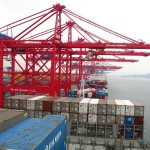
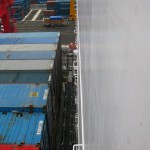
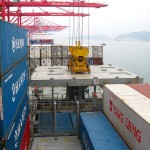

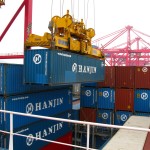
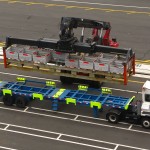
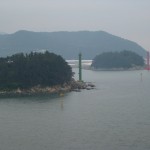
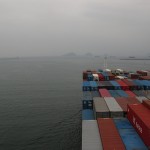
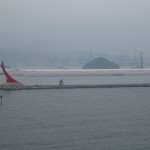
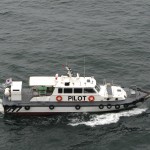
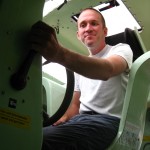
Leave a Reply